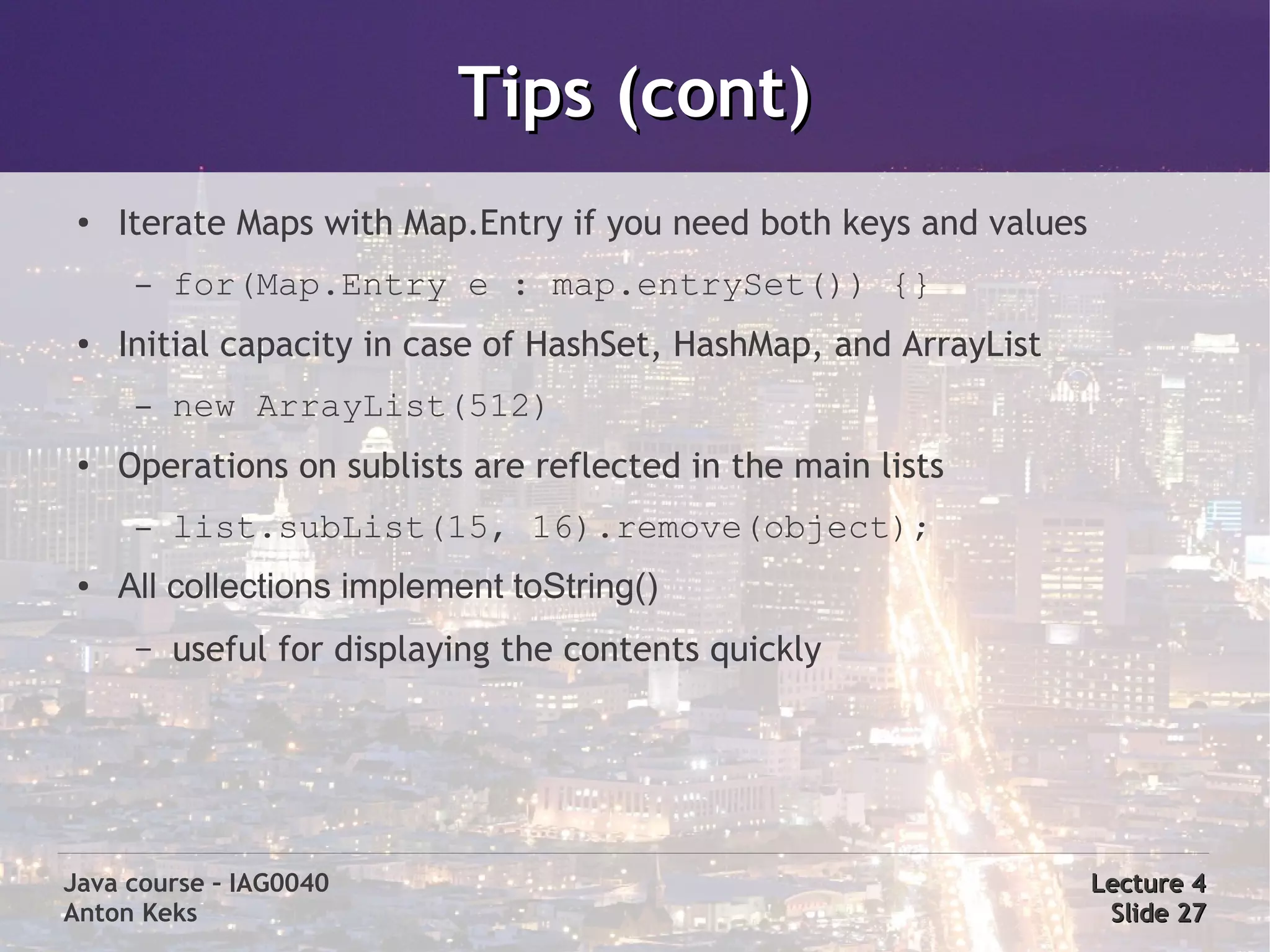The document provides an overview of Java collections and exceptions. It discusses core collection interfaces like Collection, Set, List, Queue, and Map. It also covers exception handling in Java and common exception classes. The document contains examples and tips for using collections and exceptions in code. Key collection implementations like ArrayList, HashSet, and HashMap are described.
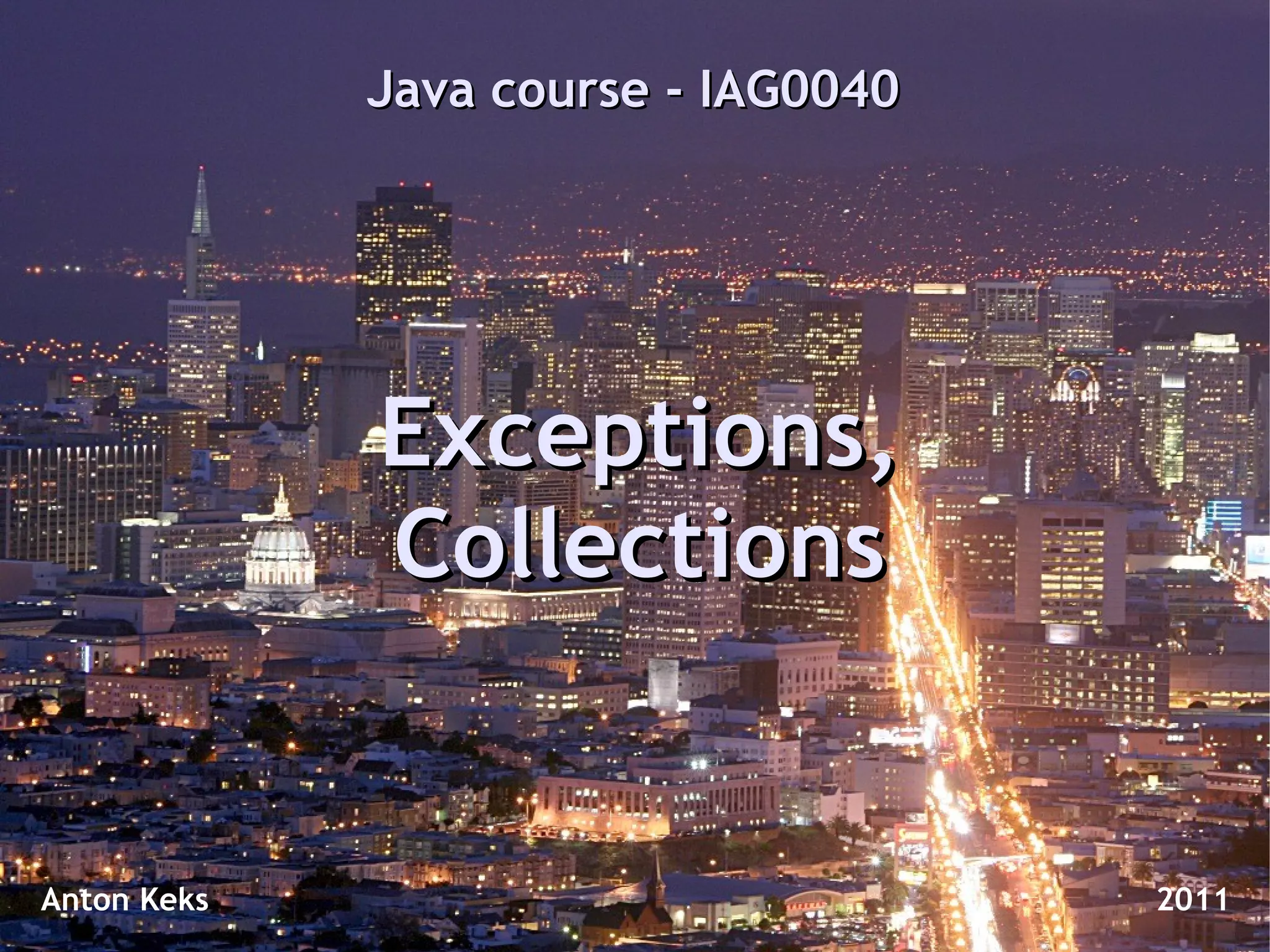
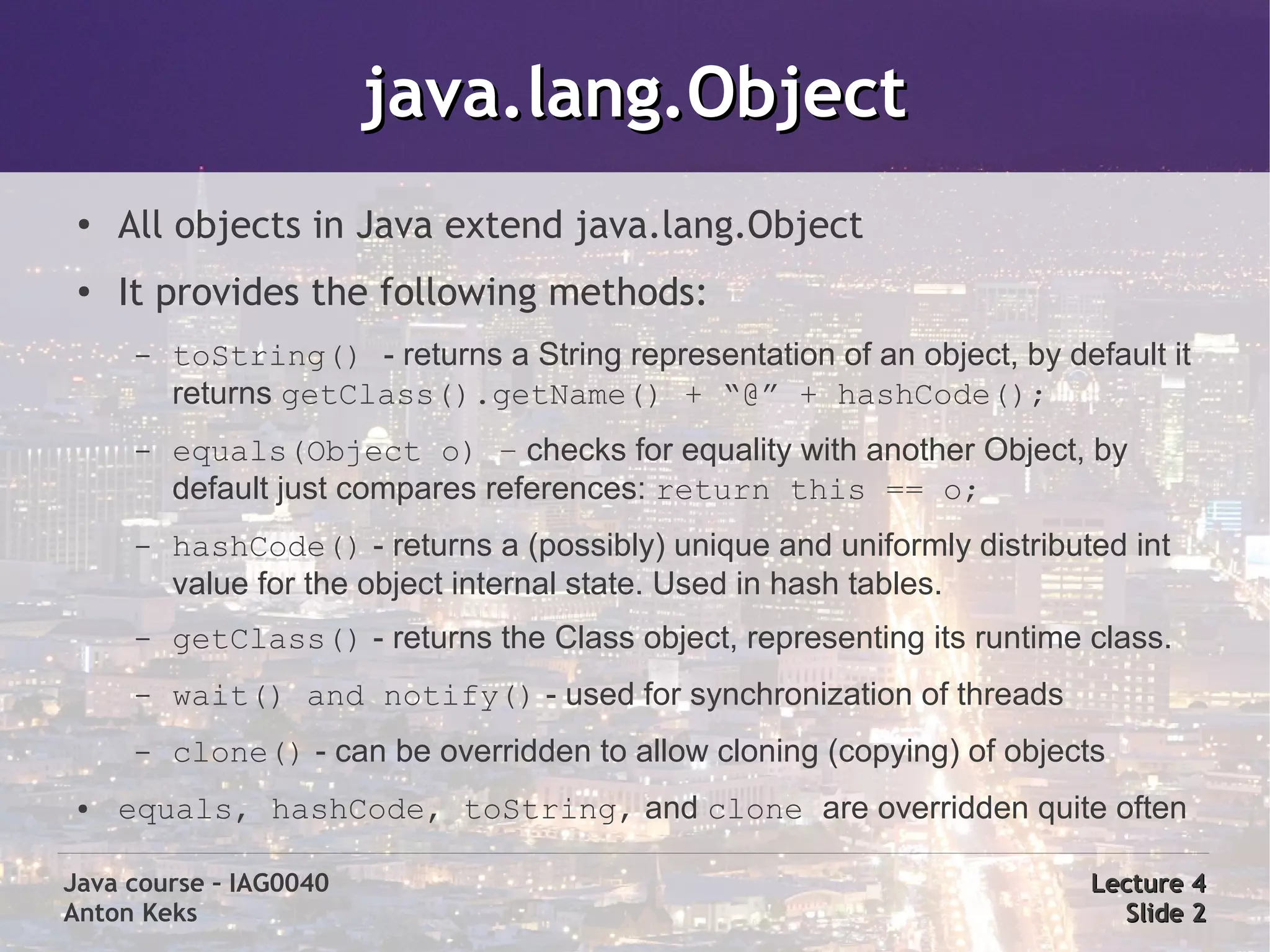
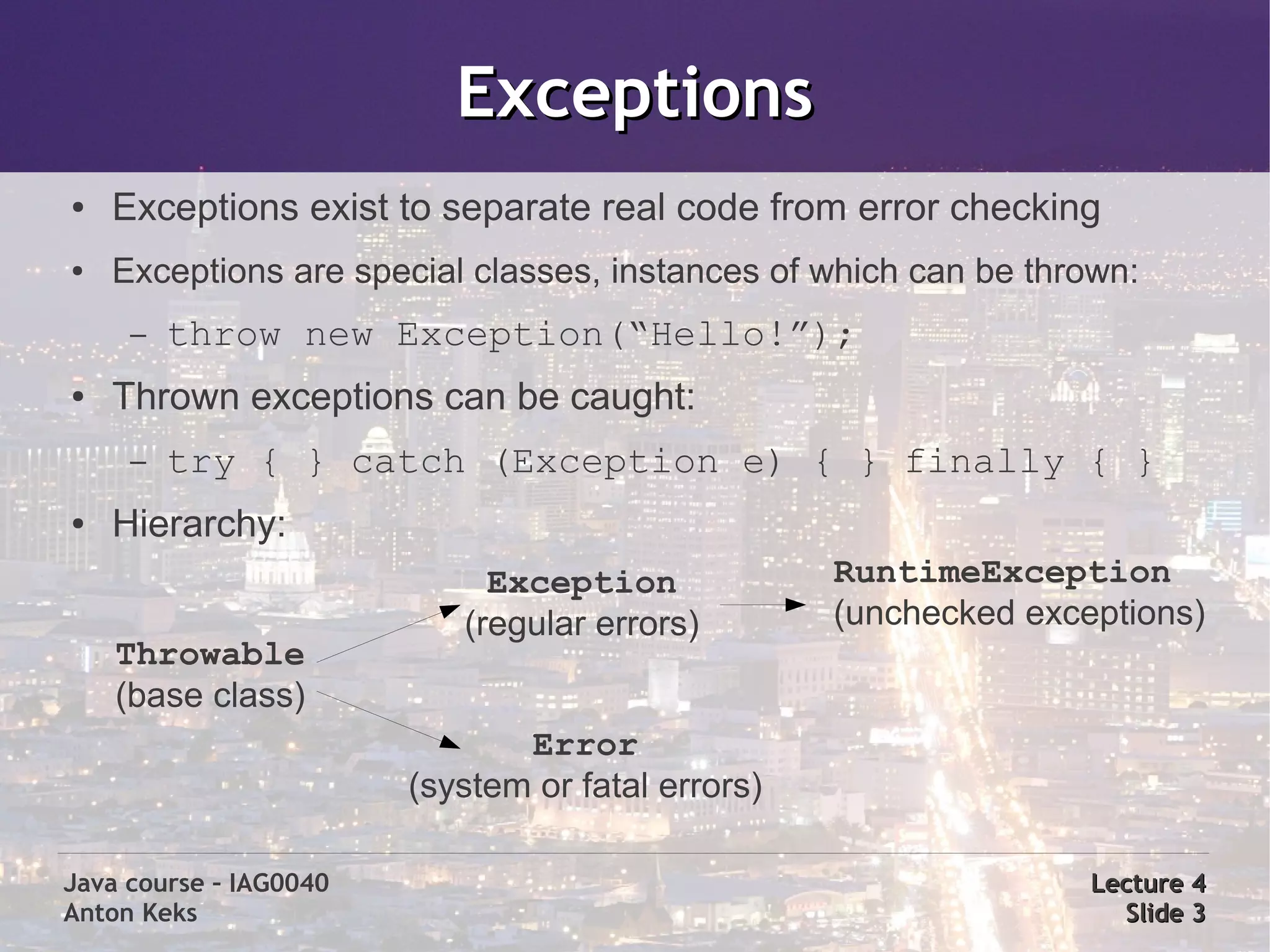

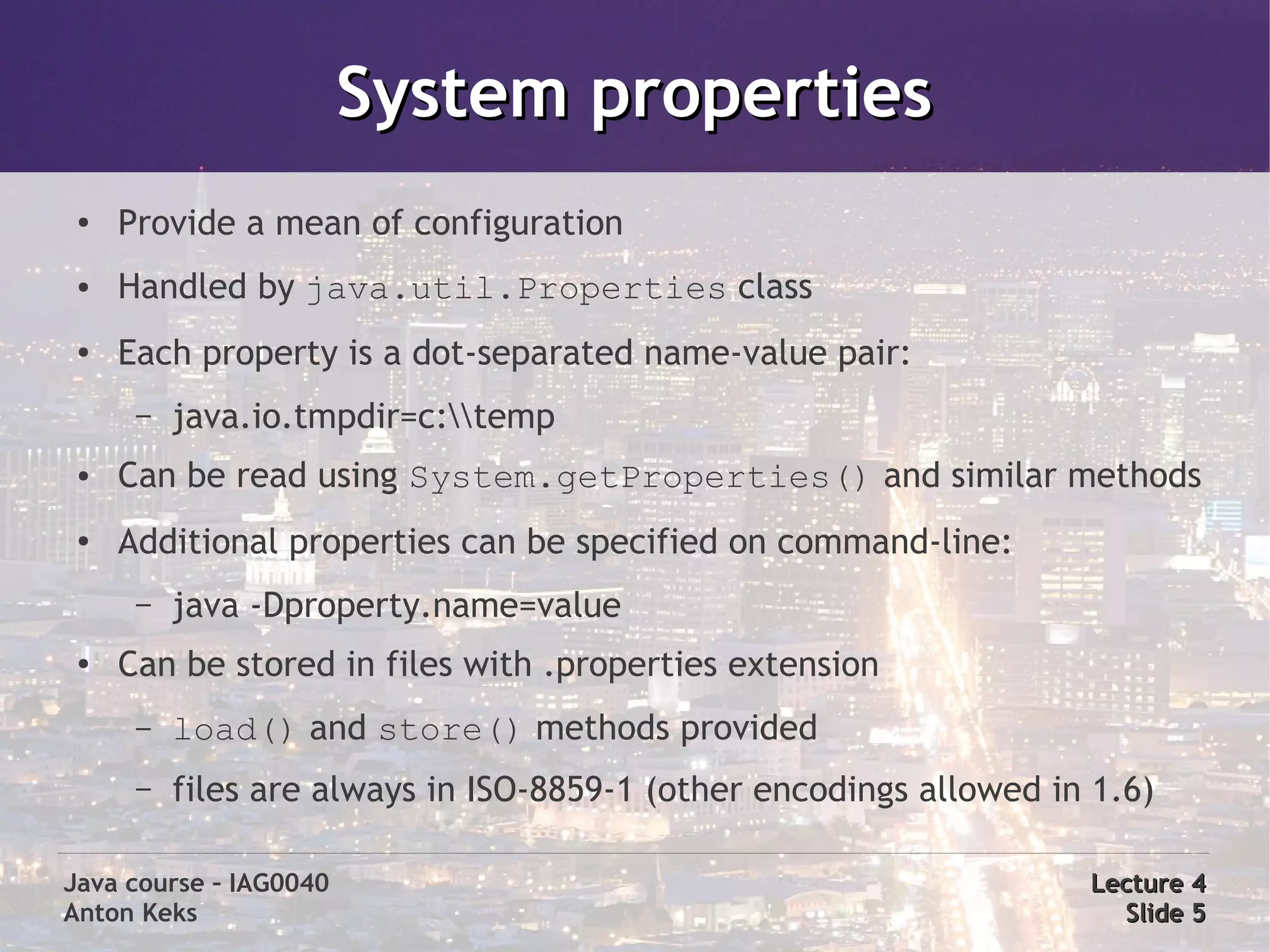

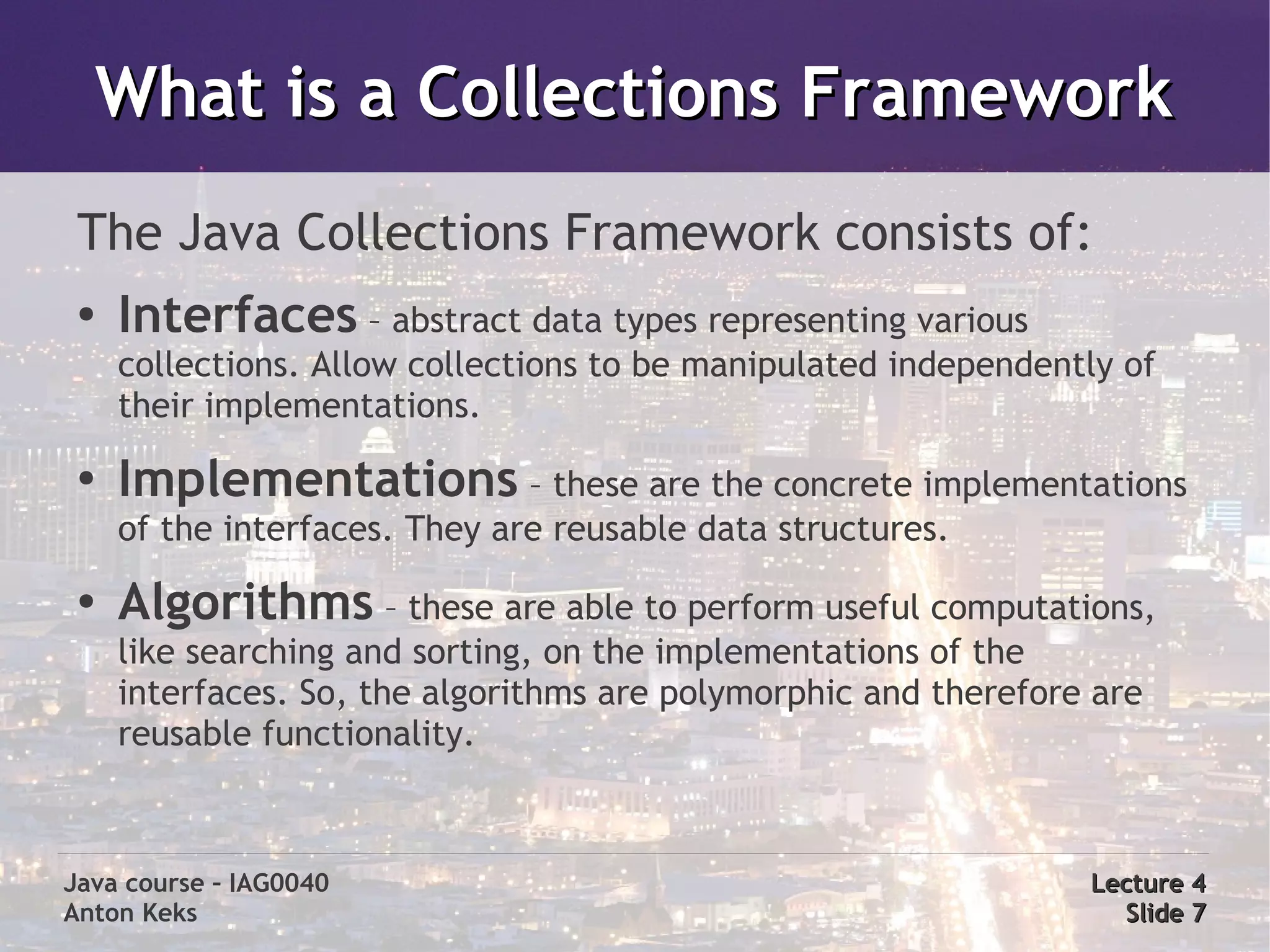
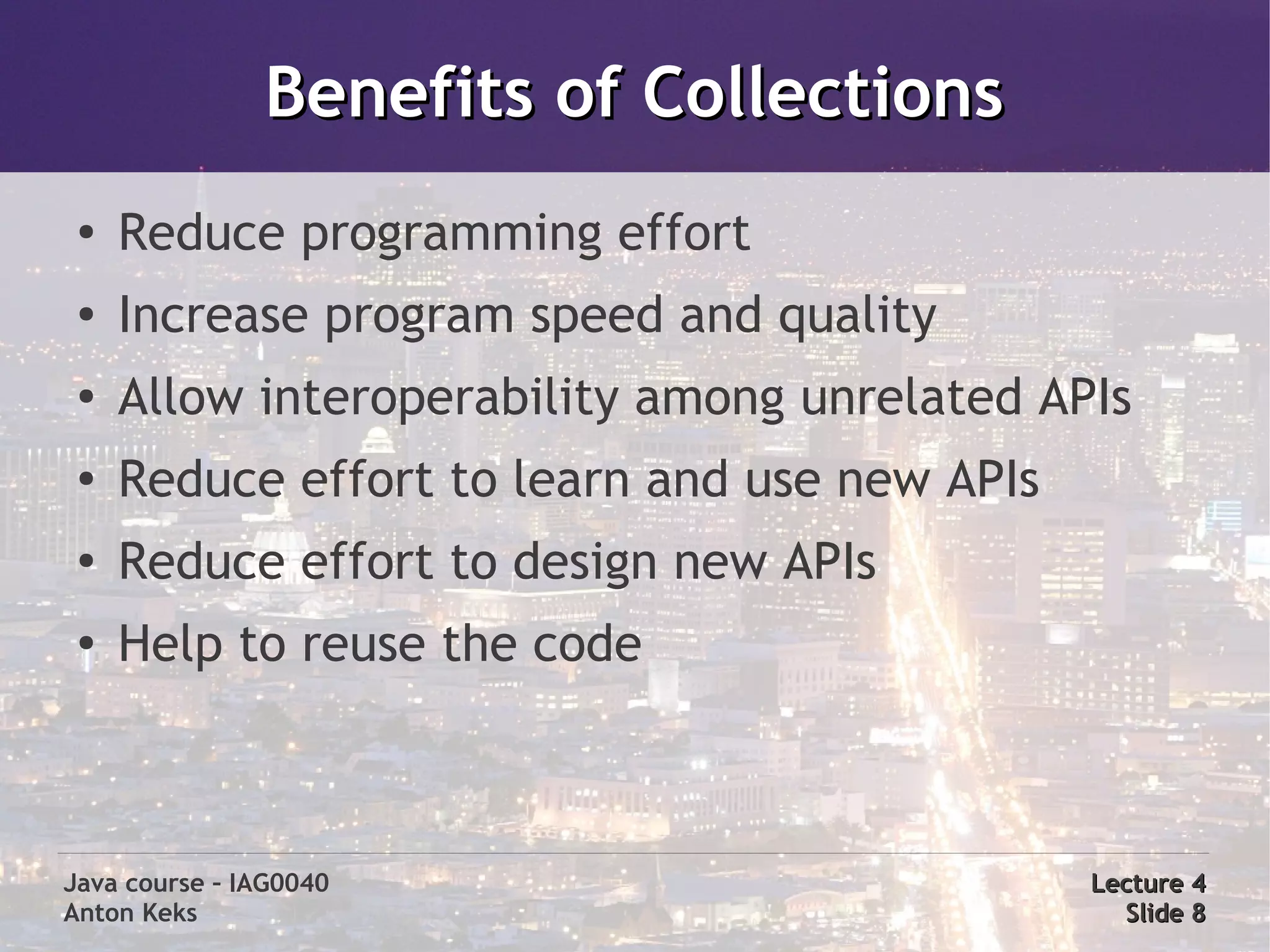
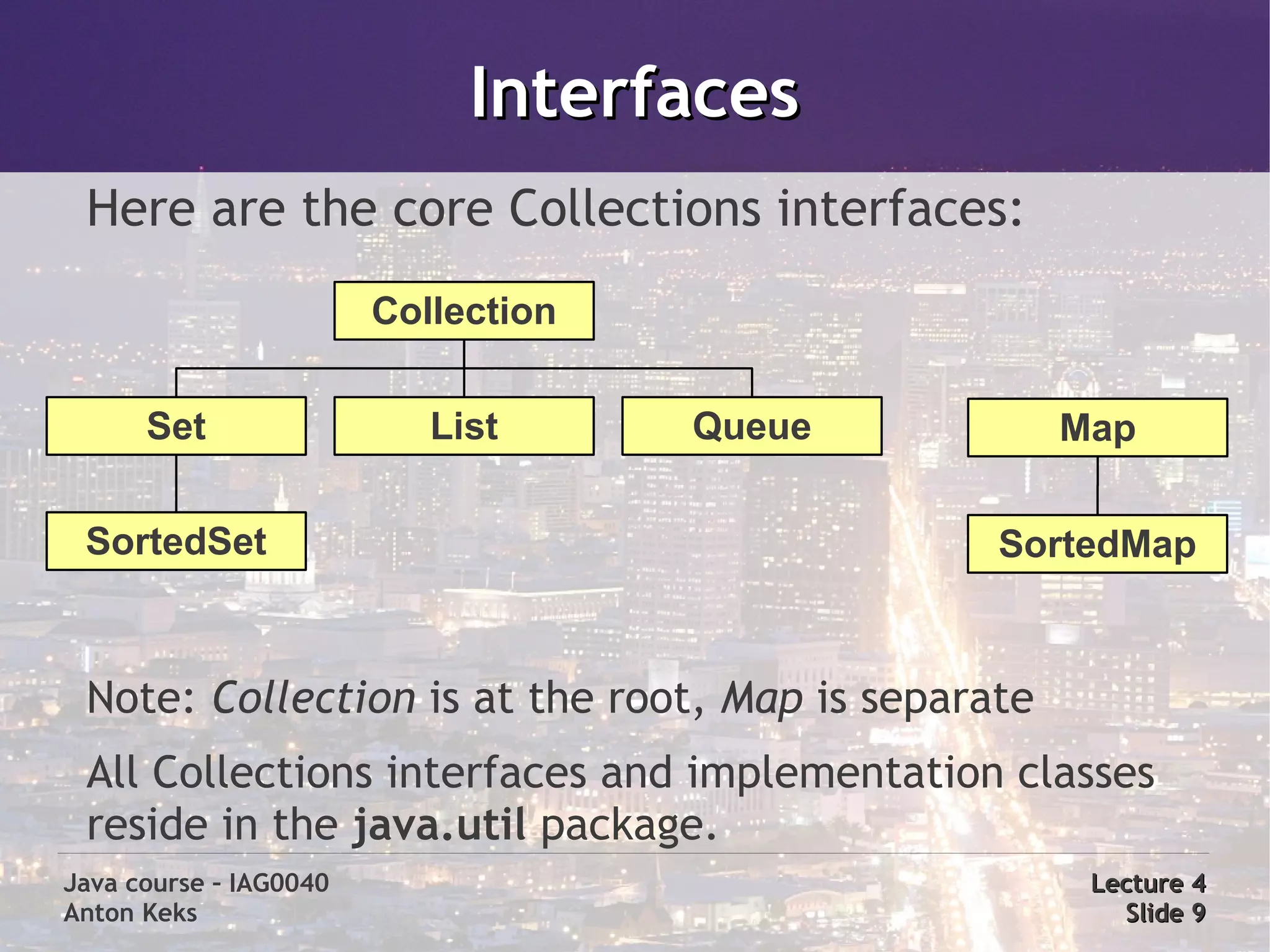

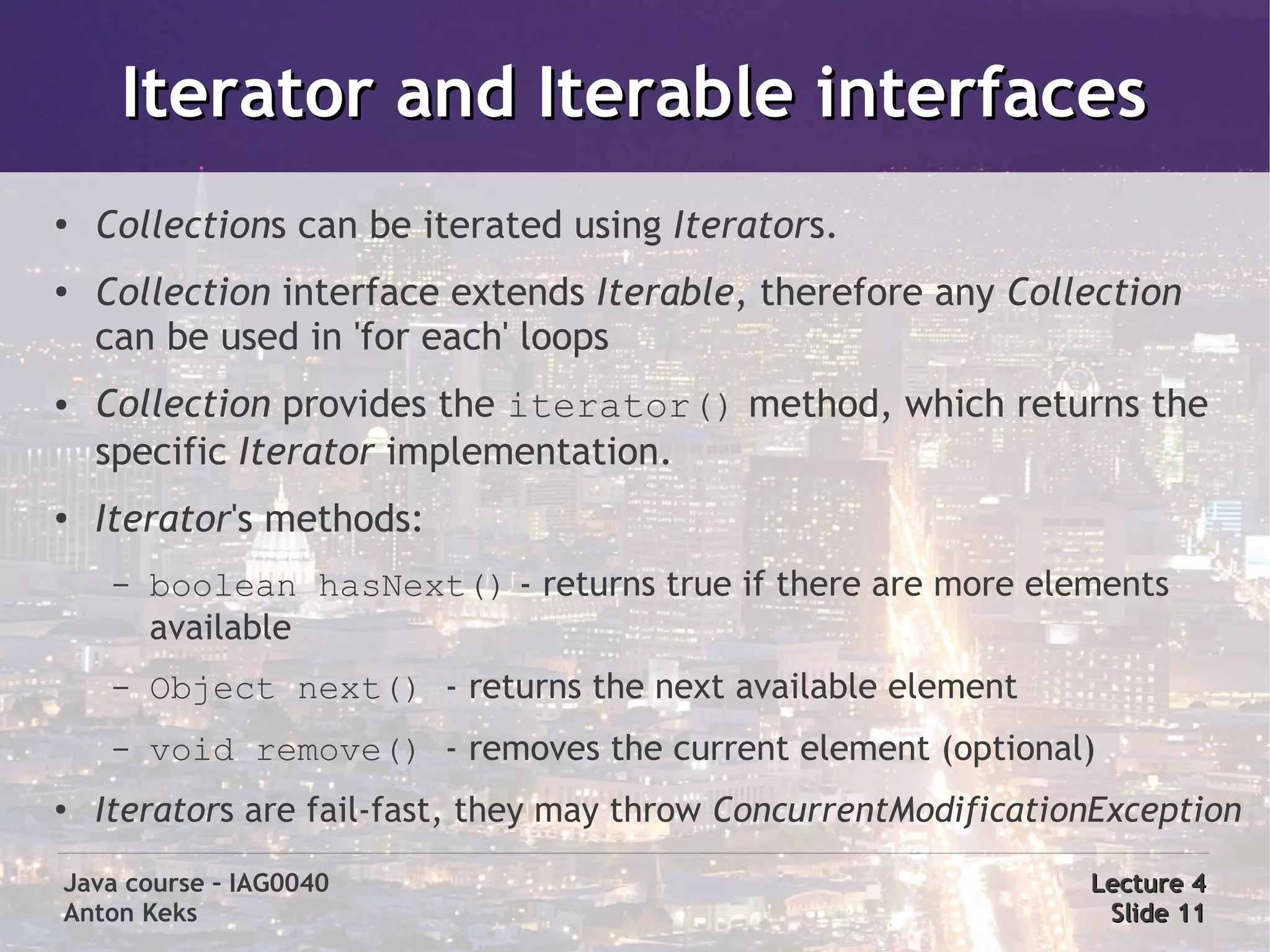
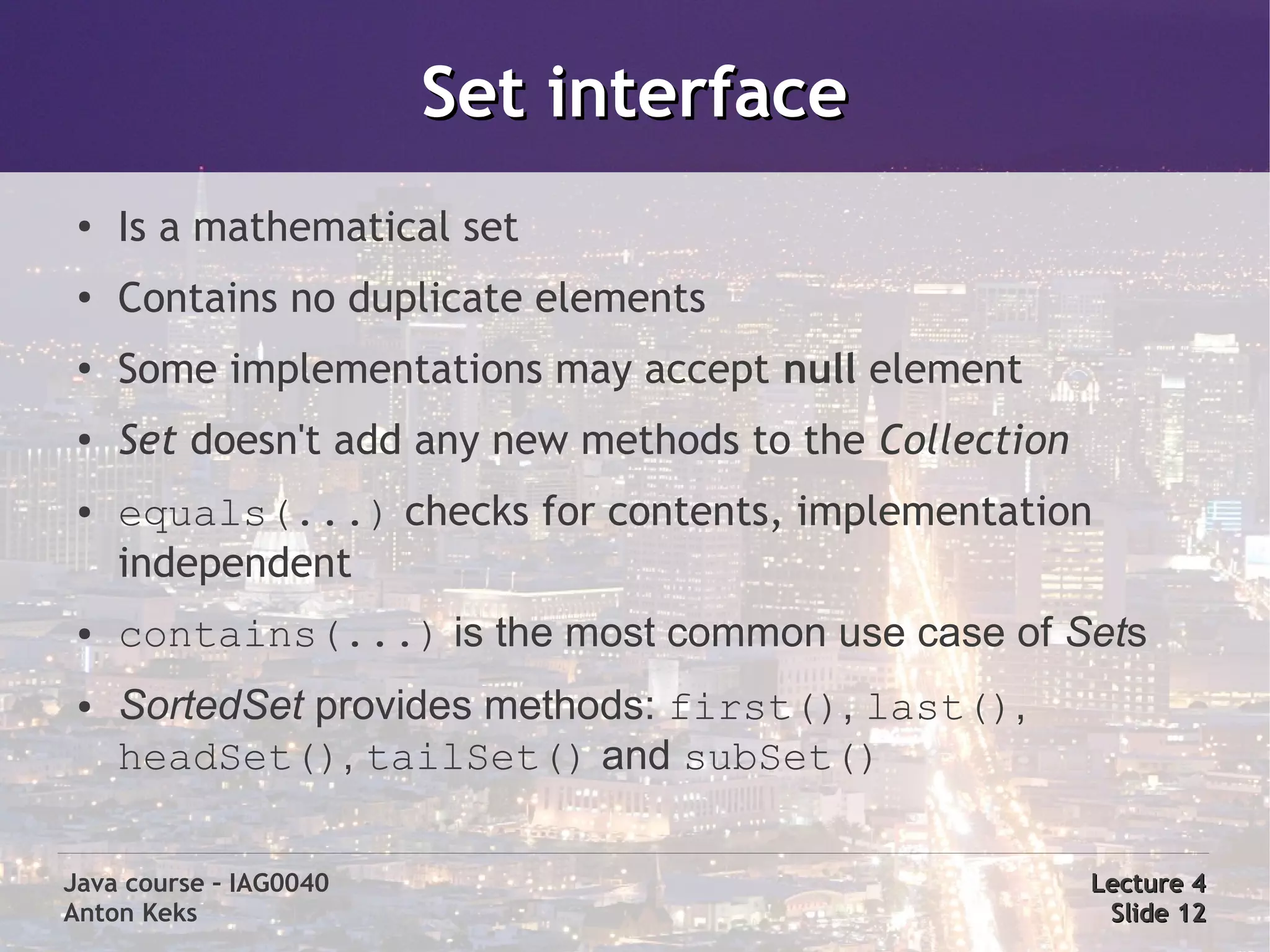
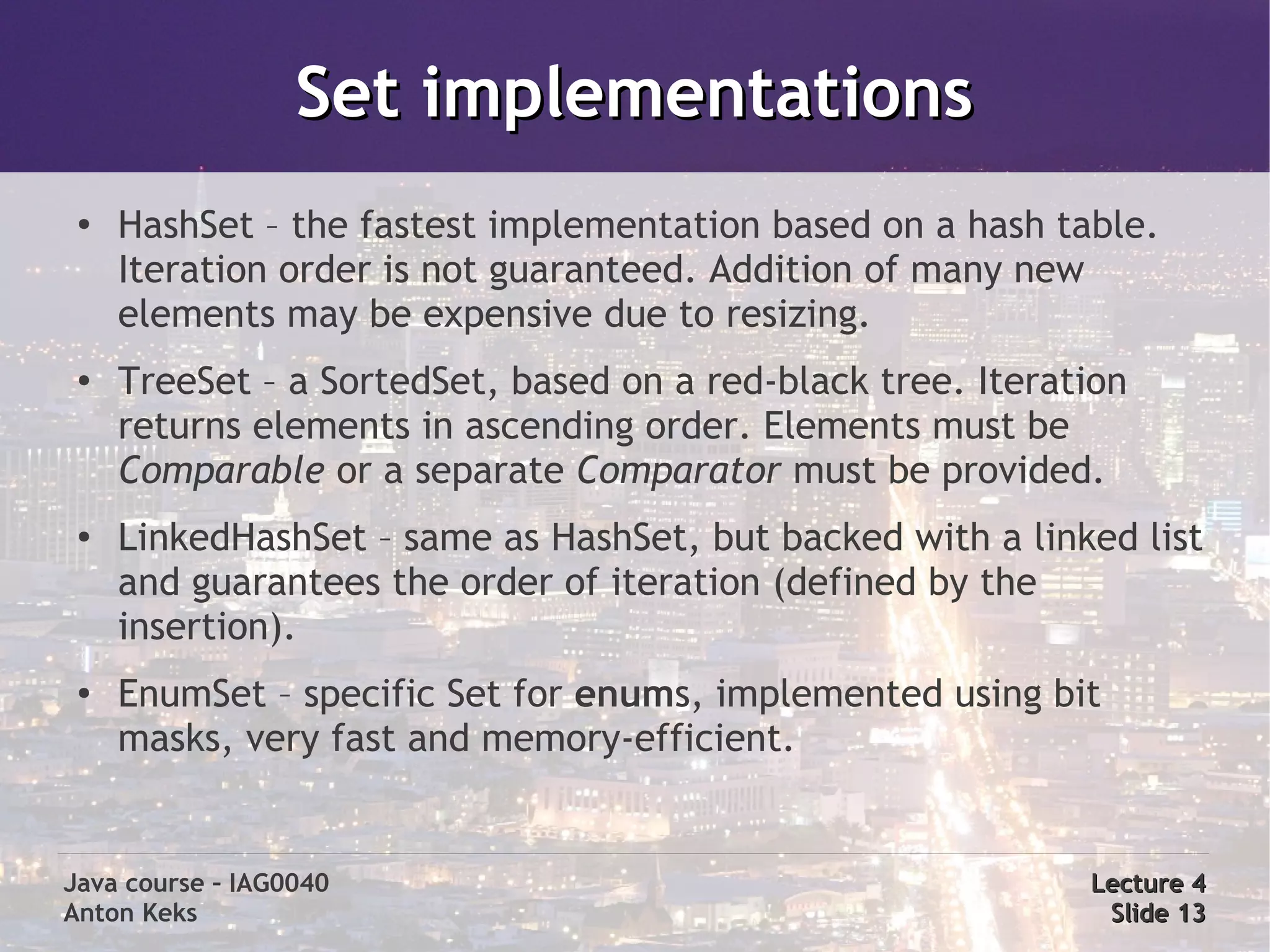
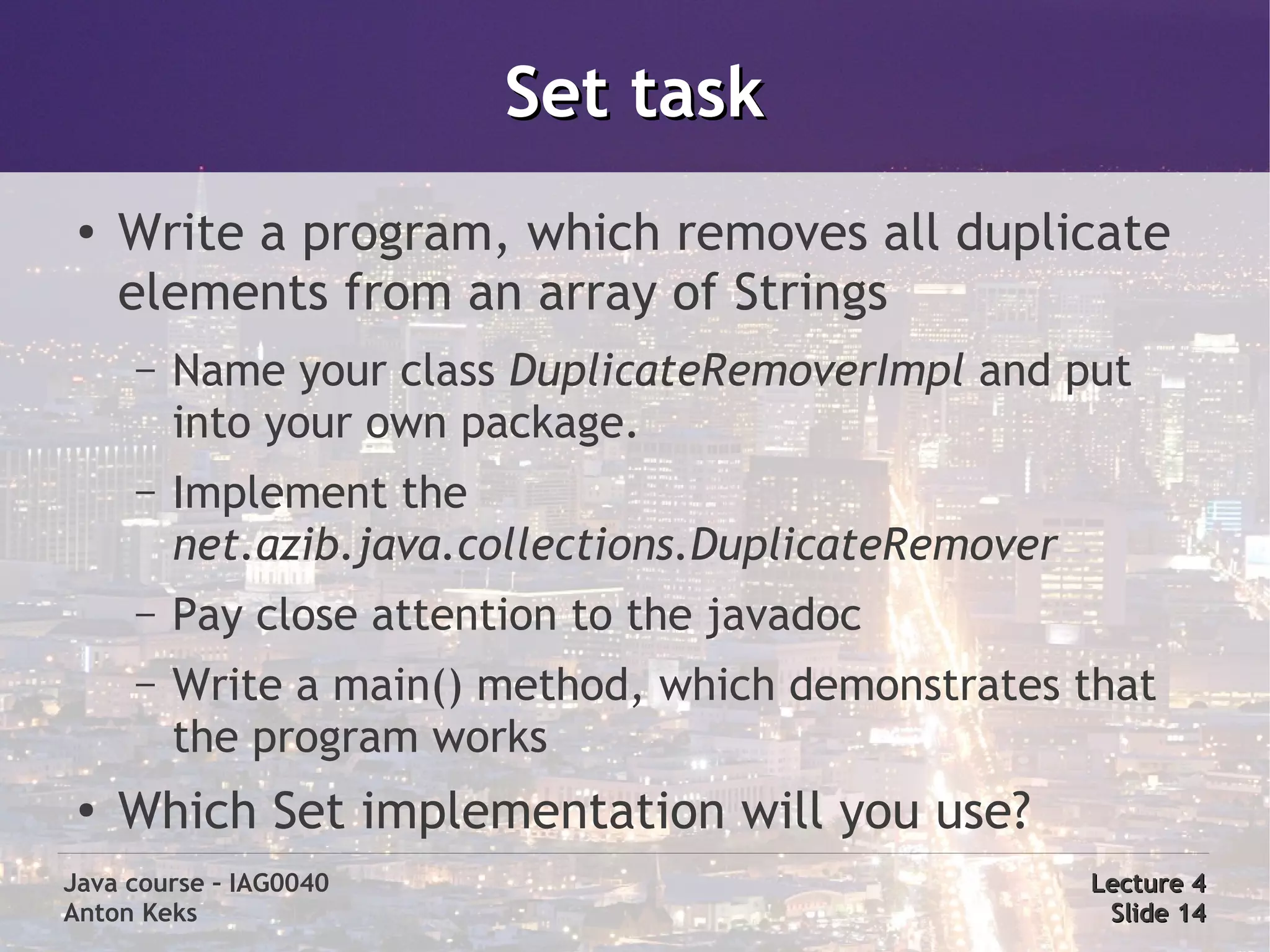
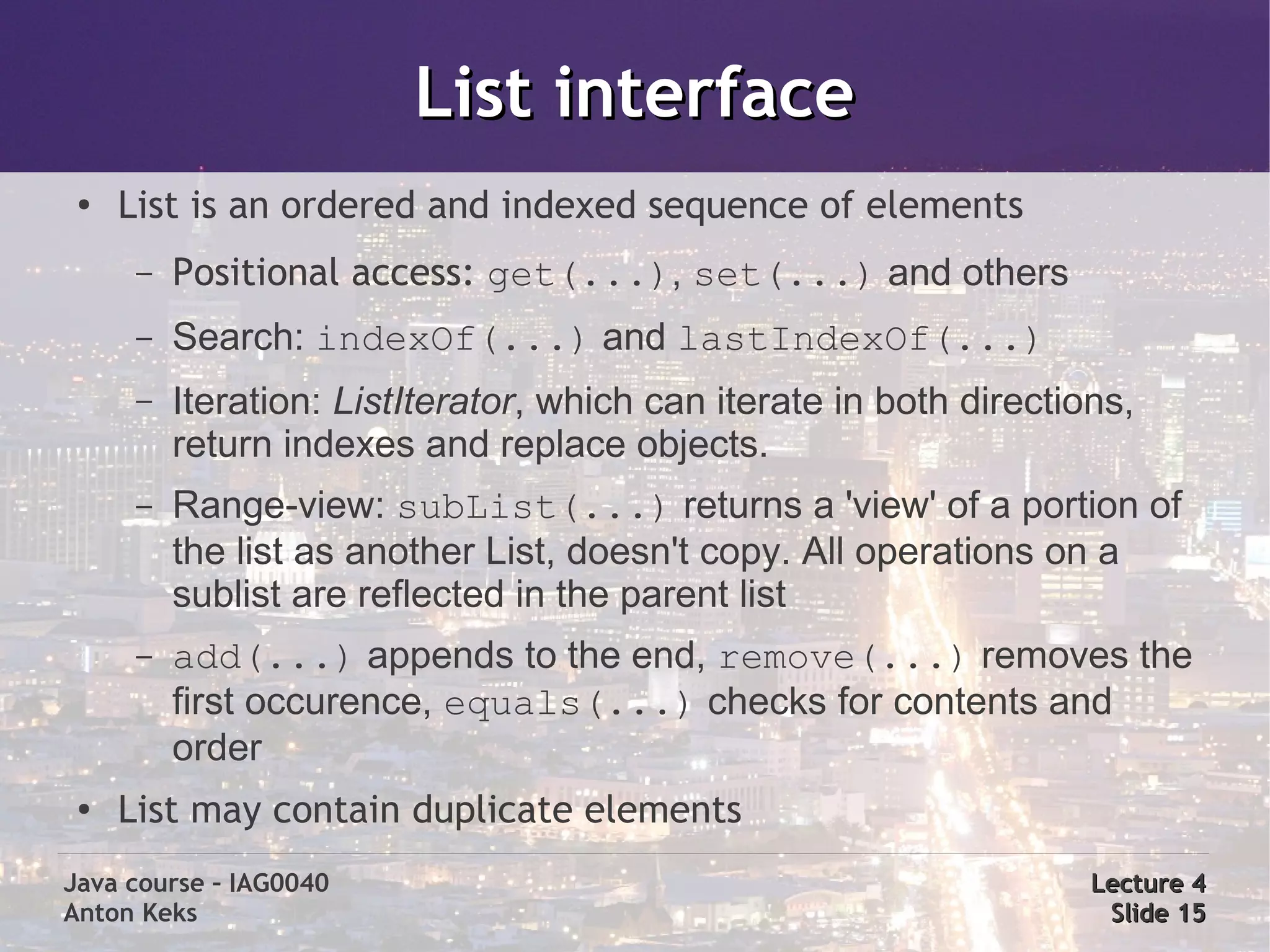
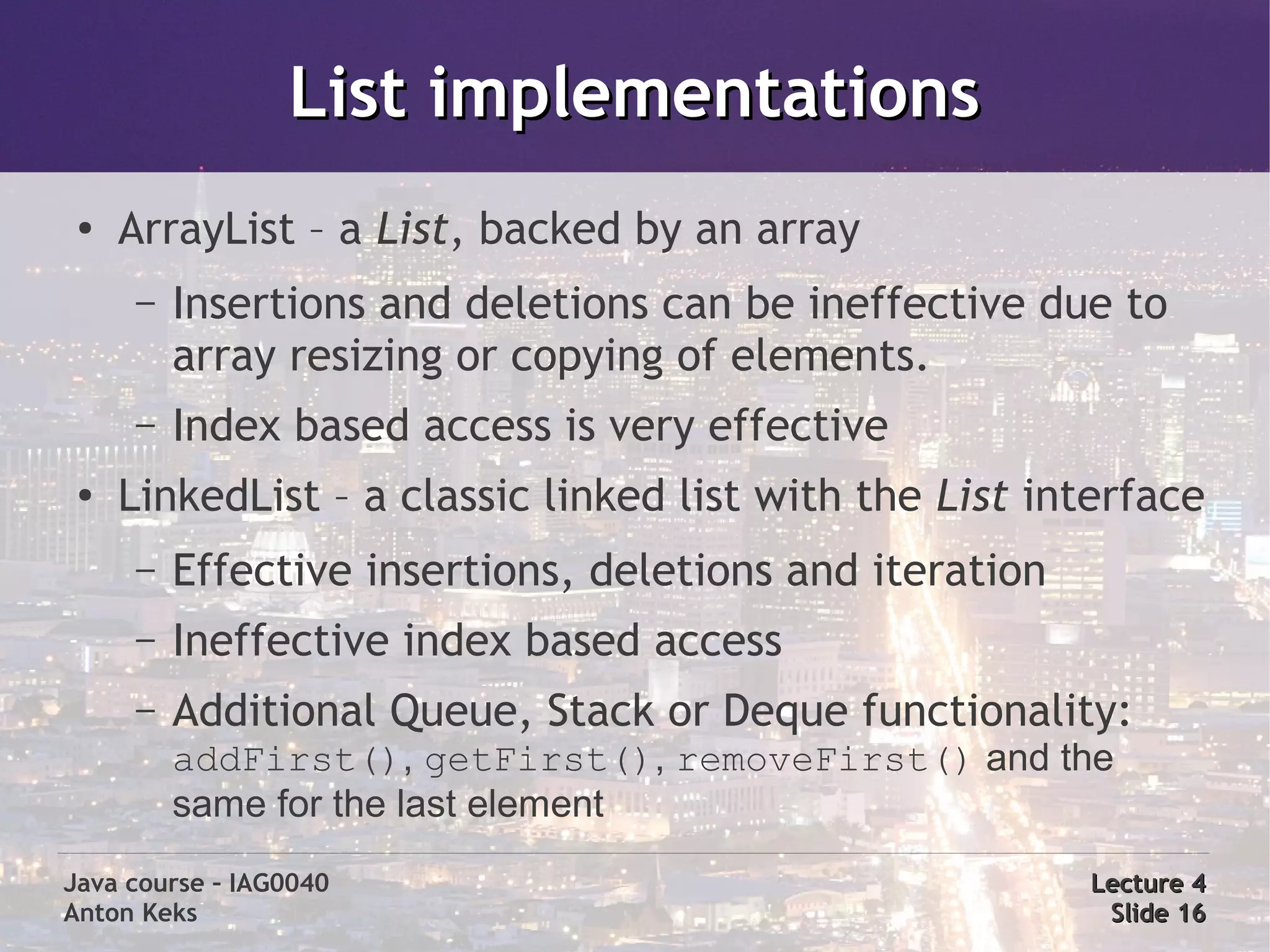
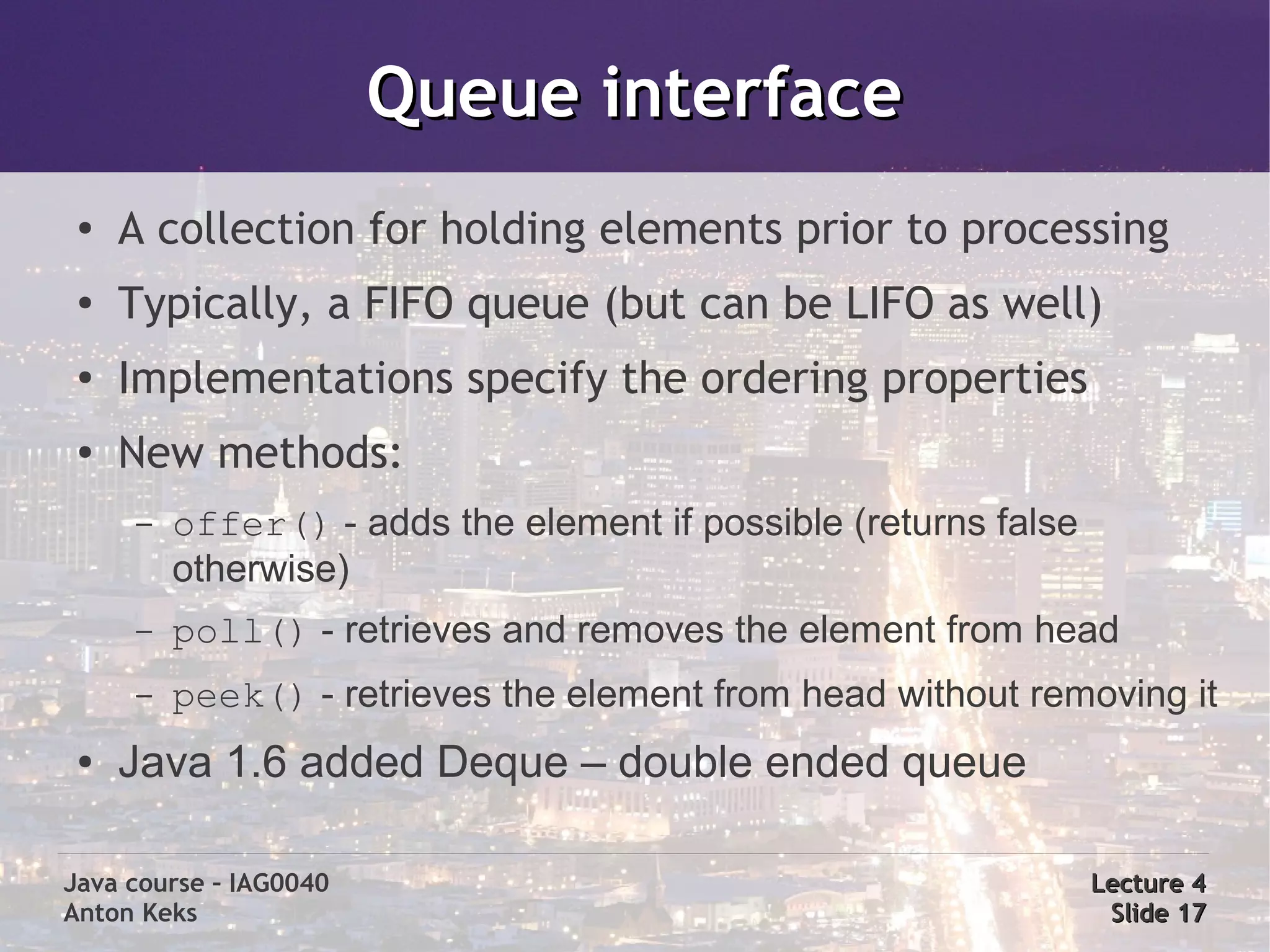

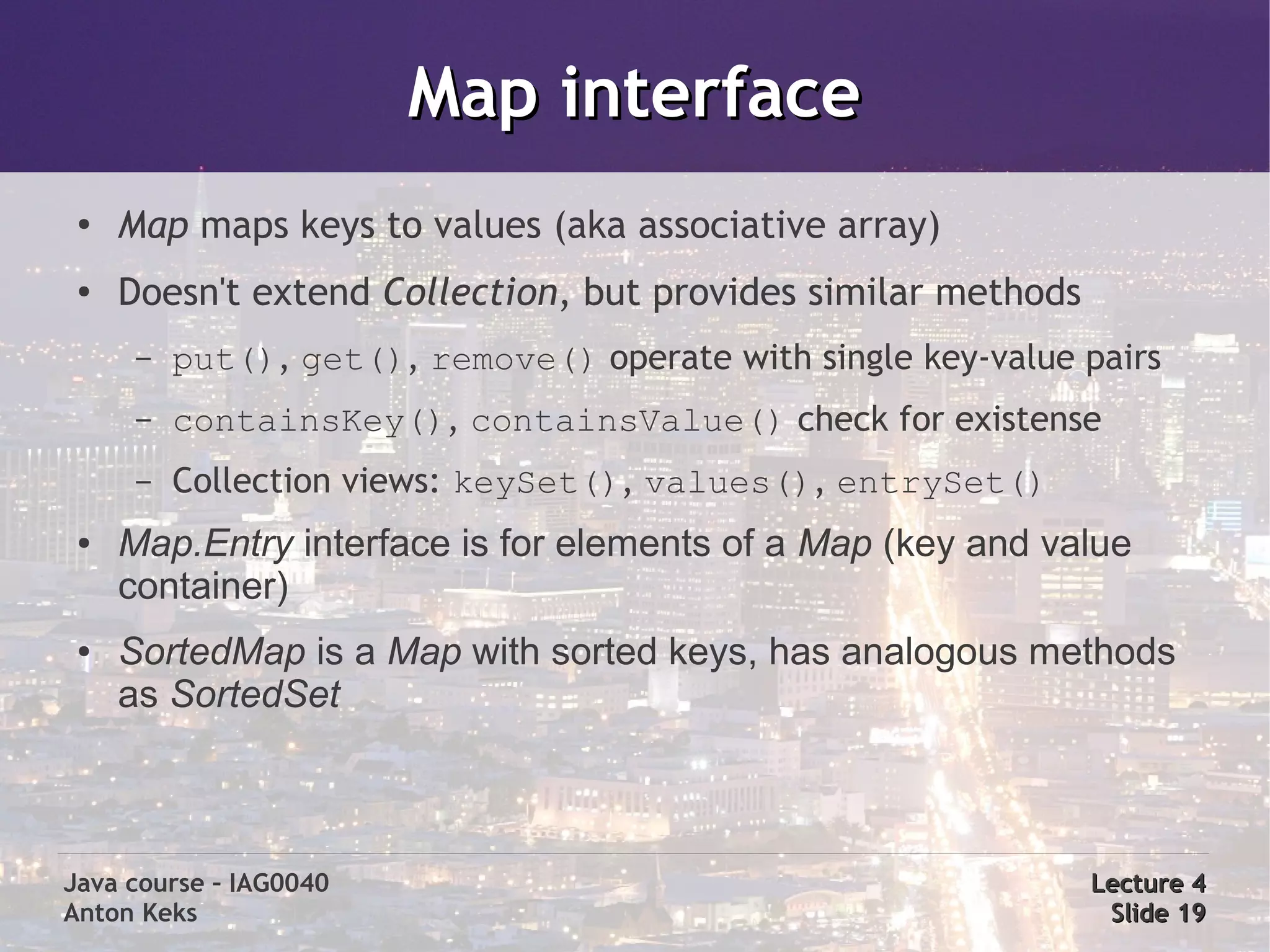
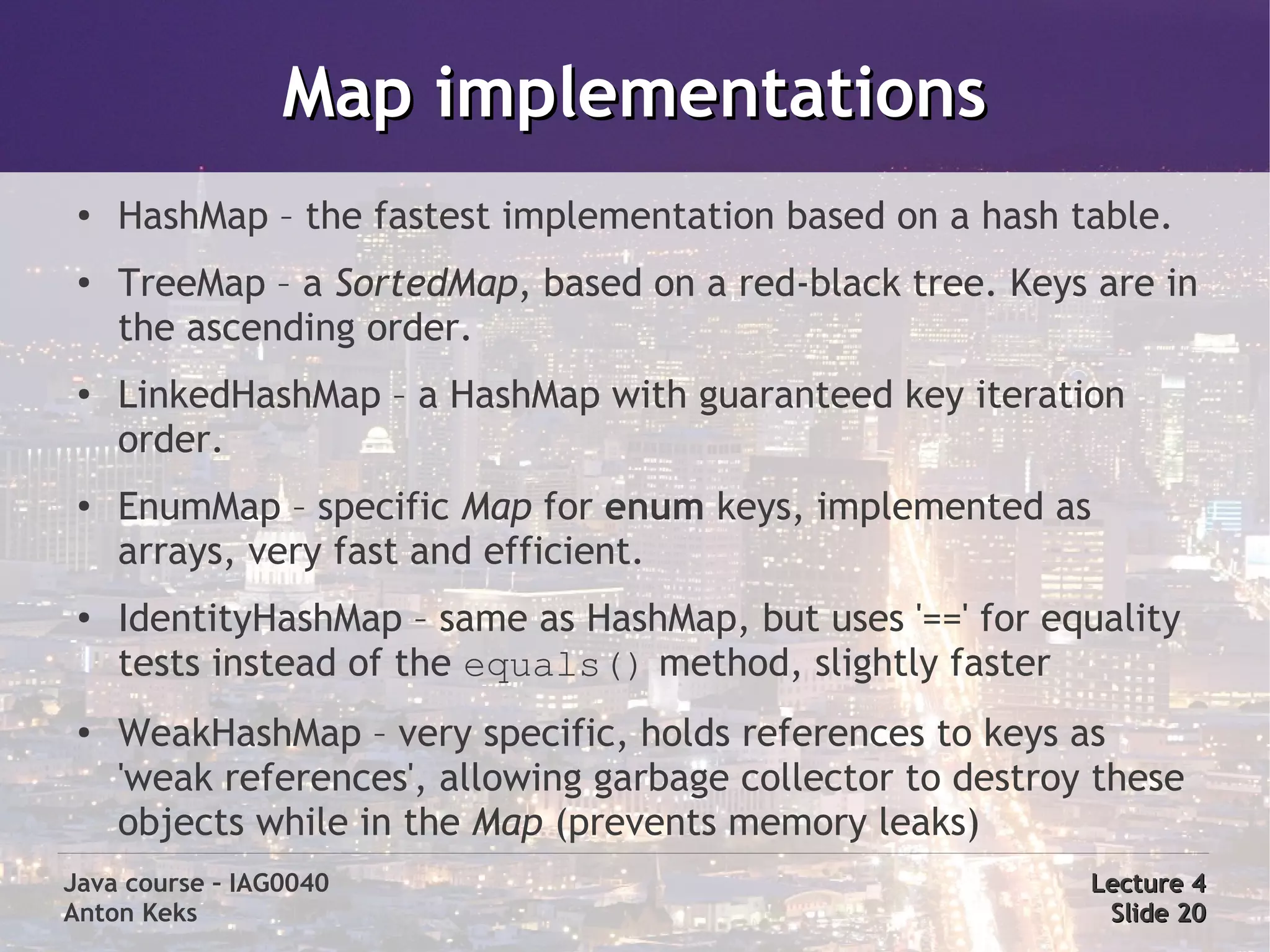

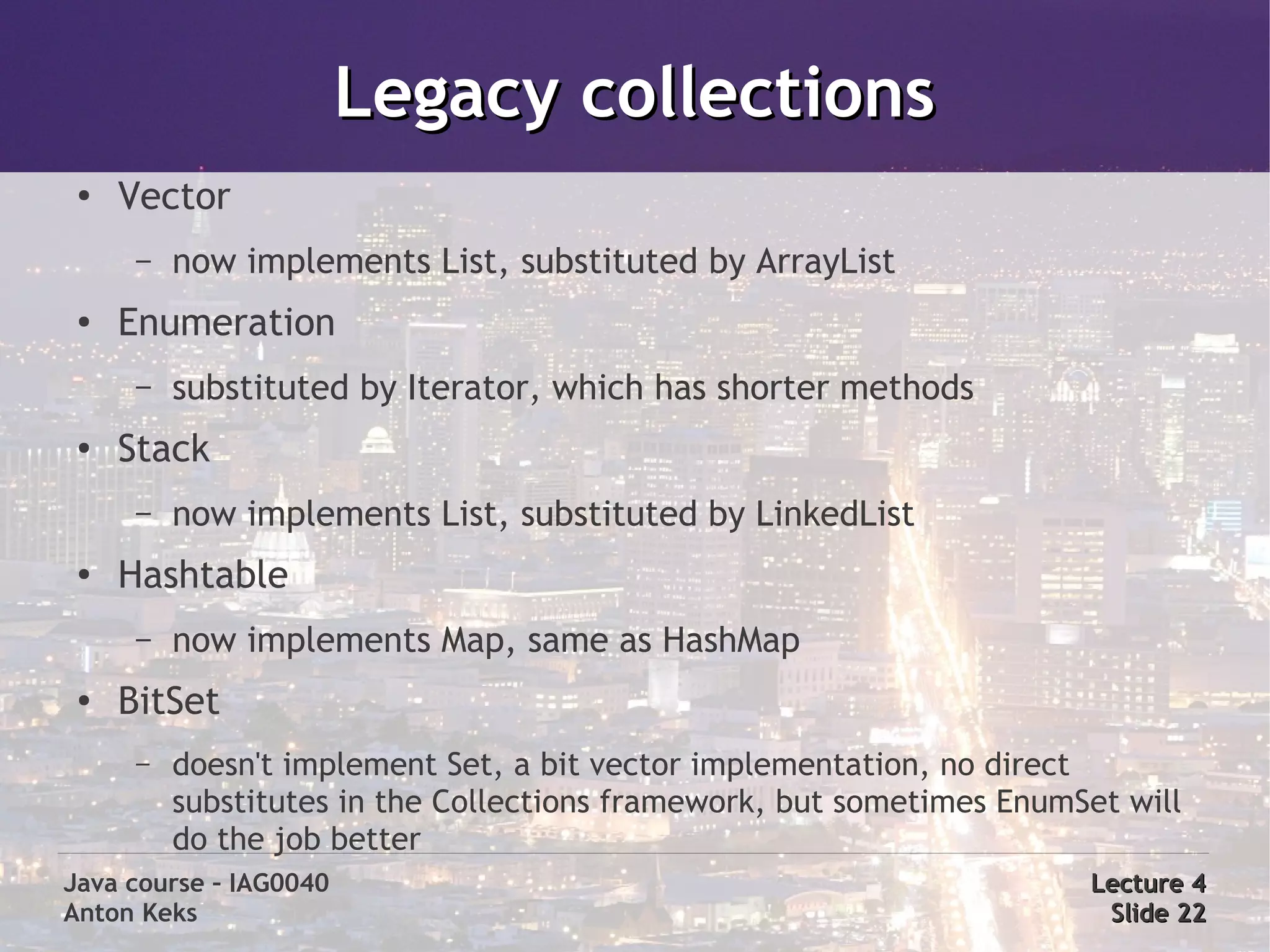
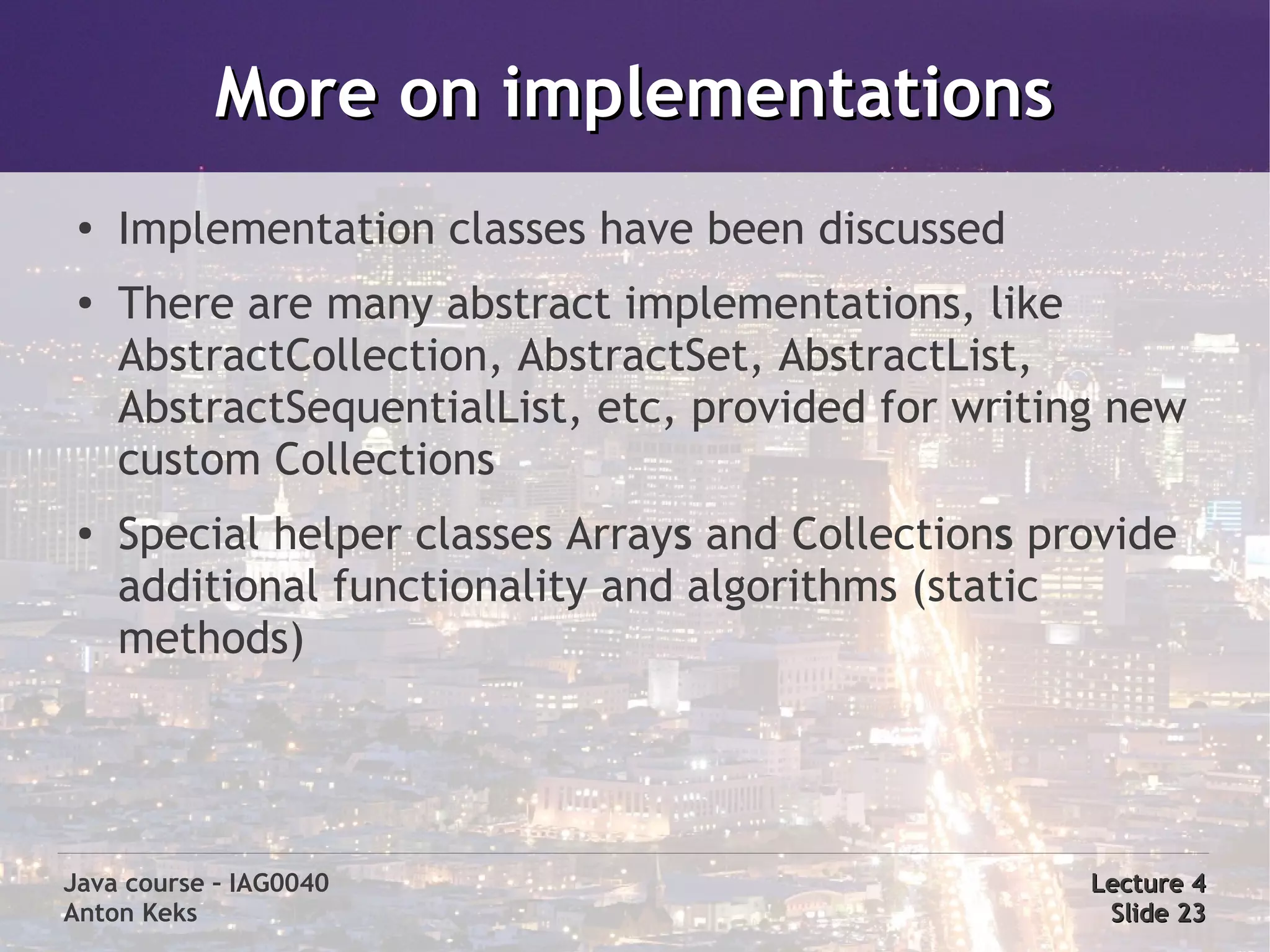
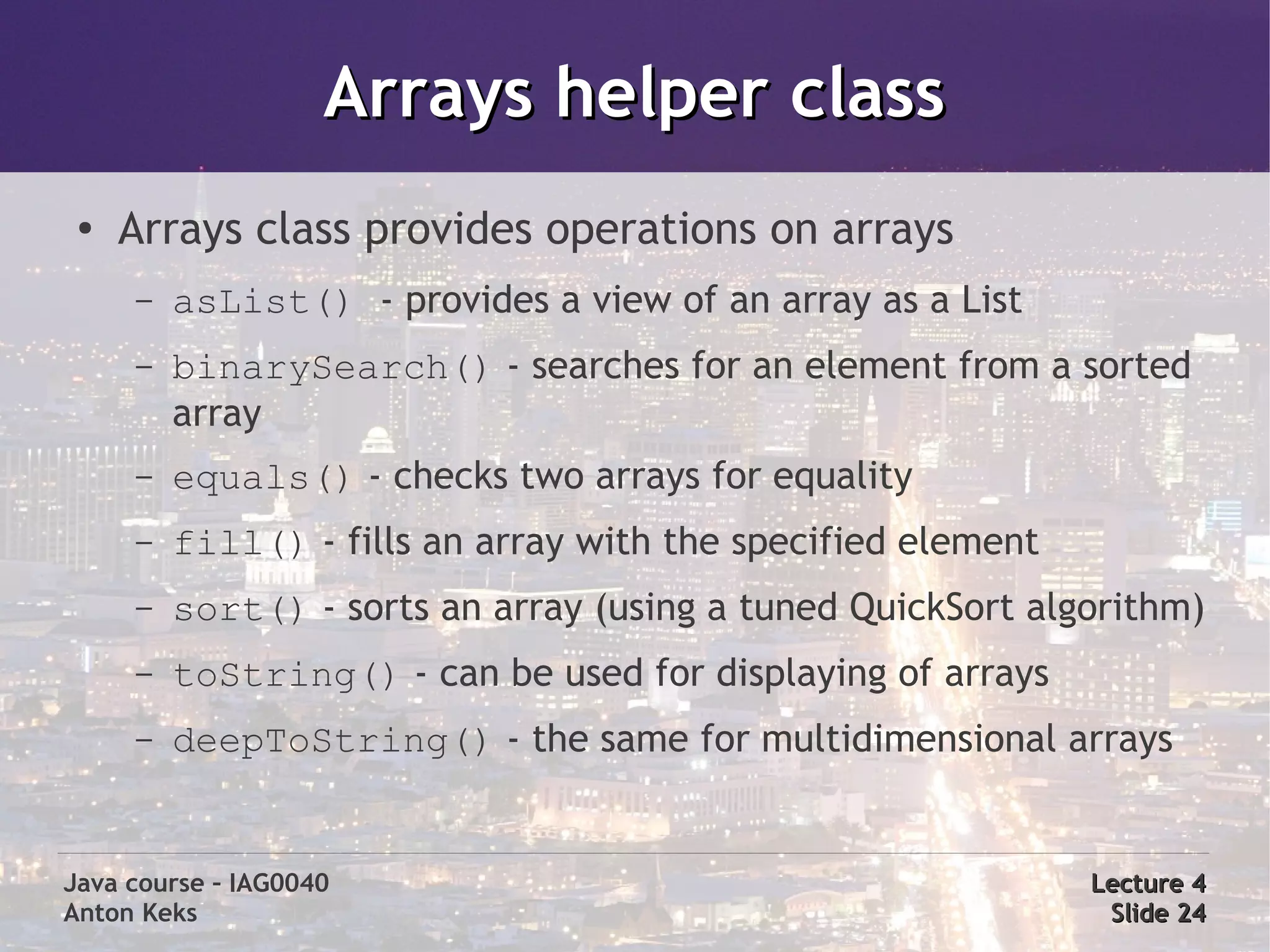
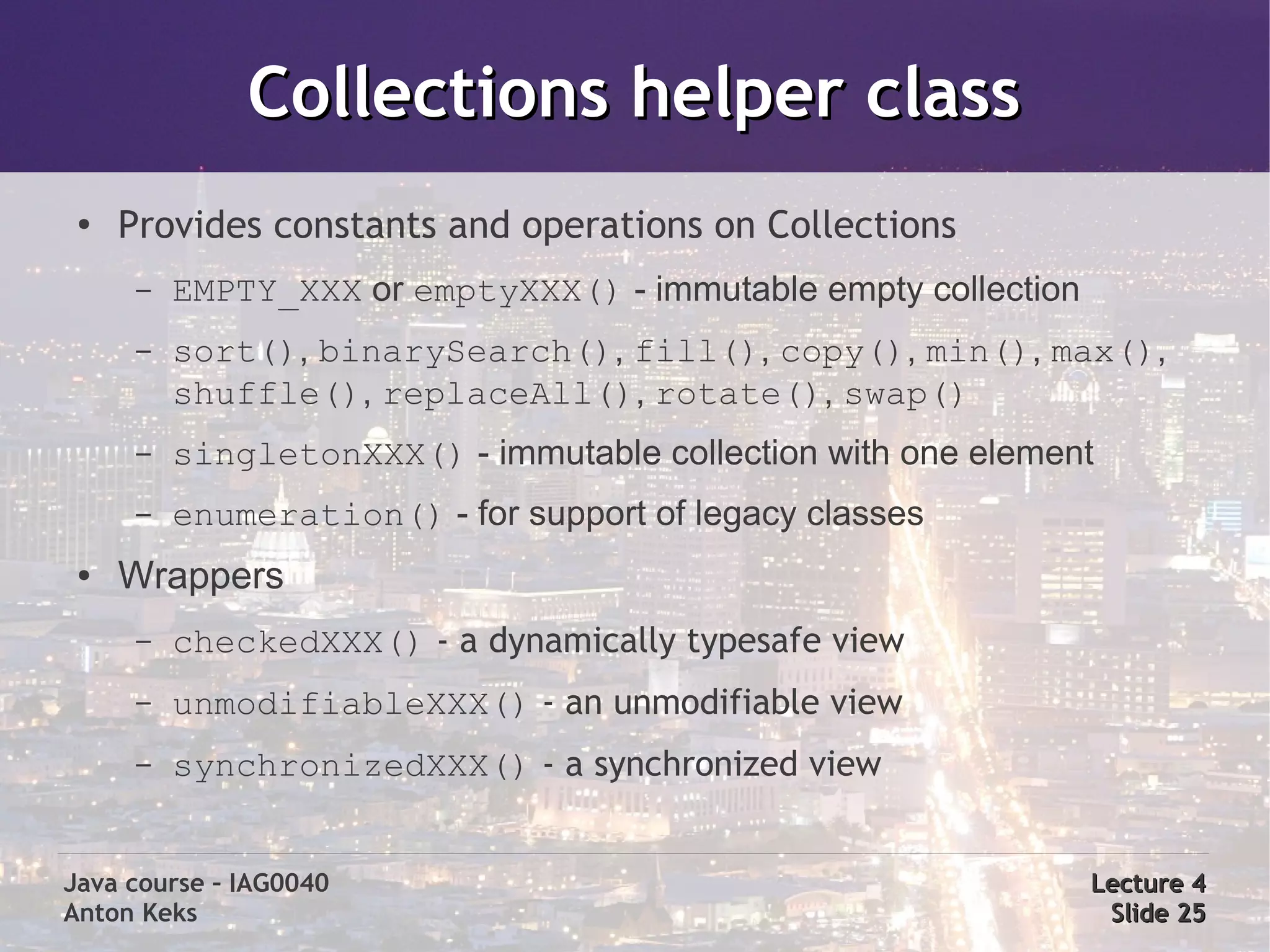
![Tips
● Program to interfaces
– List list = new ArrayList();
● Copy (or conversion) constructors
– Set set = new TreeSet(map.values());
● Checking if the Collection is empty
– collection.isEmpty()
– collection.size() == 0 may be very expensive
● Remove all nulls (or other elements):
– collection.removeAll(Collections.singleton(null))
● Convert to arrays
– String[] s = c.toArray(new String[c.size()]);
Java course – IAG0040 Lecture 4
Anton Keks Slide 26](https://image.slidesharecdn.com/4-collections-120111160226-phpapp02/75/Java-Course-4-Exceptions-Collections-26-2048.jpg)
